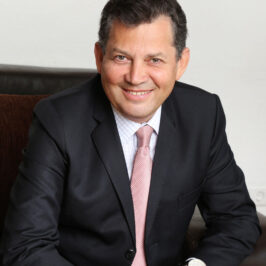Soft Tissue Management in Implant Dentistry
With
Dr. Marius Steigmann
January 26 – 28, 2024

Dr. Marius Steigmann is an Adjunct Clinical Associate Professor at the University of Michigan Department of Periodontics, Adjunct Assistant Professor of Oral and Maxillofacial Surgery at Boston University, Adjunct Assistant Professor at the University of Pennsylvania Department of Endodontics, Honorary Professor of the Carol Davila University Bucharest, and Invited Senior Guest and Visiting Professor at the University of Szeged.
He is the founder and scientific chairman of Update Implantologie Heidelberg 2002-2011 and the founder and director of the Steigmann Institute. Dr. Steigmann lectures and publishes extensively and maintains a private practice in Neckargemund, Germany.
MODULE 3: SOFT TISSUE MANAGMENT PROSTHETIC SOFT TISSUE DEVELOPMENT
In addition to surgical intervention is the creation of the specific emergence profile that is essential in the aesthetic zone. The emergence profile composed of 2 parts, the abutment and the subgingival part of the crown. The shape of abutment can be individually shaped so that it gives natural appearance and varies individually (depending on the depth, angulation and diameter of the implant). Sometimes it even dictates the implant position. From a surgical perspective, soft tissue height, position and thickness need to be diagnosed and corrected when needed. From the prosthetic point of view, the emergence profile has to be created to mimic the natural appearance and maintained over time. The course teaches step by step how to be successful with implant prosthetics from single tooth, partially edentulous to full arch reconstruction.
LEARNING OBJECTIVES
- Abutment design for ideal soft tissue support
- Pontic design for aesthetic soft tissue development Emergence profile design for crown and abutment
- Different Wax-ups modalities
- Crown margin definition
- Gingiva-management with temps and Mock ups Strategy and procedures on Prosthetic implant planning
- Abutment selection single tooth (chairside & lab side)
- Abutment selection multiple implants
The main purpose of this course is to explain, demonstrate and teach soft tissue development around implants in fixed single and multiple implant placement.
MODULE 4: SOFT COMPLICATION AND FULL ARCH RESTORATION
With the increasing number of implants placed in the aesthetic zone immediate or delayed we face soft tissue complications like recession of the soft tissue and papilla loss. This course will show individualized approaches to correct papilla loss in the aesthetic zone with the help of modern flap design techniques. With the incising demand of an aesthetic outcome, soft tissue management for full arch restoration has become a necessity.
DAY 1
LEARNING OBJECTIVES
- Preventing and repair of soft tissue complications around implants
- Gingival recession around implants-how to repair
- Papilla development after papilla loss Prosthetic soft tissue solutions
Peri-implantitis diagnostic:- non aesthetic zone
- aesthetic zone
- Treatment of Peri-implantitis in the aesthetic & non aesthetic zone
- Compression necrosis
- Prevention and maintenance of marginal bone loss
The main purpose of this course is to provide dentists with specialized knowledge and techniques to address and correct soft tissue complications associated with dental implants in the aesthetic zone.
DAY 2
LEARNING OBJECTIVES
- Soft tissue development for multiple implants in the aesthetic zone
- Fabrication and design of temporaries for soft tissue development
- Therapy planning in full arch reconstruction for high aesthetic demand
- Galvano formed prosthetic treatment in Maxillary full arch treatment
- Different treatment options for full arch reconstruction
- Fabrication and design of temporaries for soft tissue development
The course aims to equip participants with individualized approaches and modern flap design techniques to prevent and repair soft tissue complications such as gingival recession, papilla loss, and peri-implantitis.
